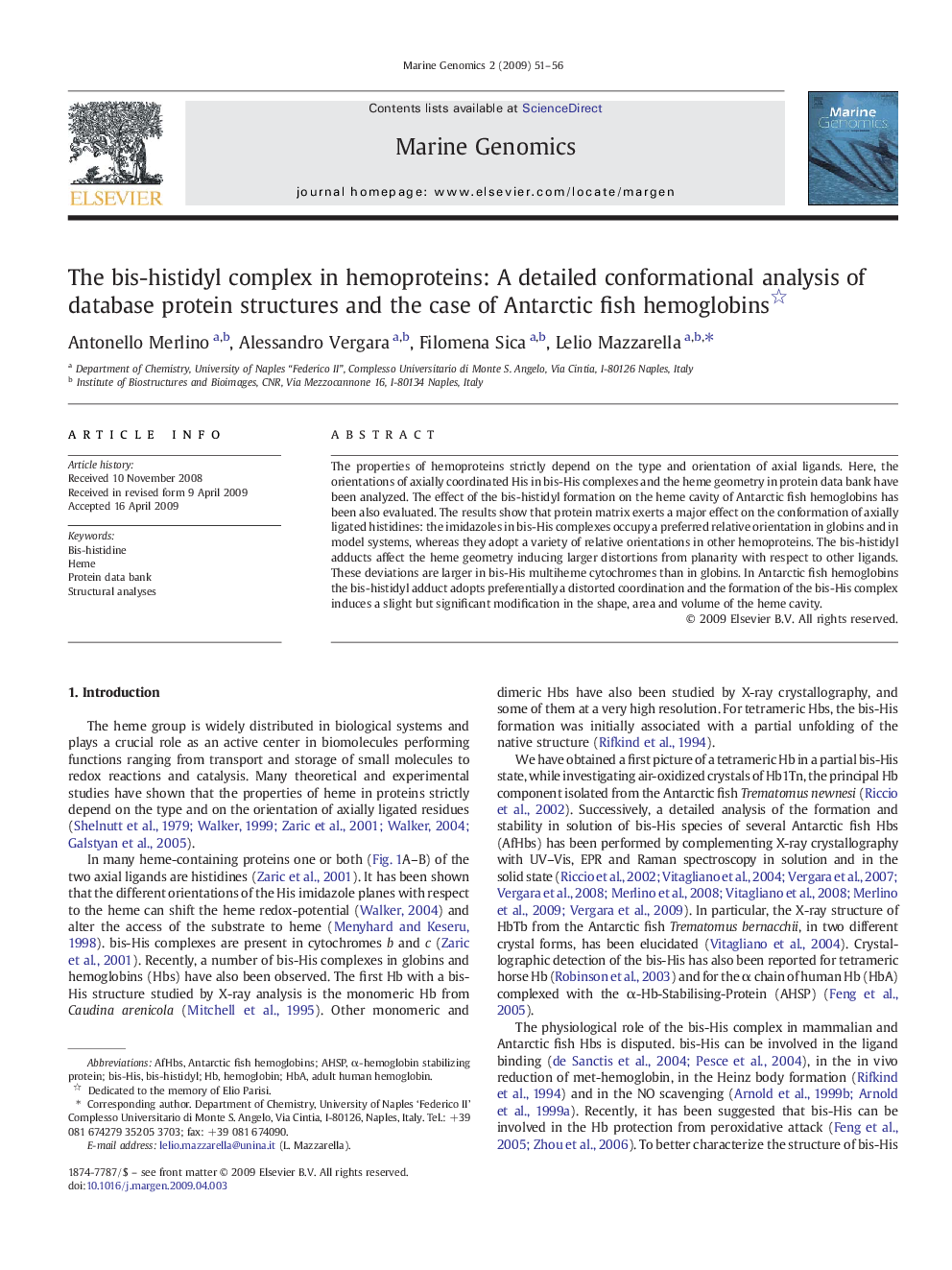| Article ID | Journal | Published Year | Pages | File Type |
|---|---|---|---|---|
| 2058328 | Marine Genomics | 2009 | 6 Pages |
The properties of hemoproteins strictly depend on the type and orientation of axial ligands. Here, the orientations of axially coordinated His in bis-His complexes and the heme geometry in protein data bank have been analyzed. The effect of the bis-histidyl formation on the heme cavity of Antarctic fish hemoglobins has been also evaluated. The results show that protein matrix exerts a major effect on the conformation of axially ligated histidines: the imidazoles in bis-His complexes occupy a preferred relative orientation in globins and in model systems, whereas they adopt a variety of relative orientations in other hemoproteins. The bis-histidyl adducts affect the heme geometry inducing larger distortions from planarity with respect to other ligands. These deviations are larger in bis-His multiheme cytochromes than in globins. In Antarctic fish hemoglobins the bis-histidyl adduct adopts preferentially a distorted coordination and the formation of the bis-His complex induces a slight but significant modification in the shape, area and volume of the heme cavity.
